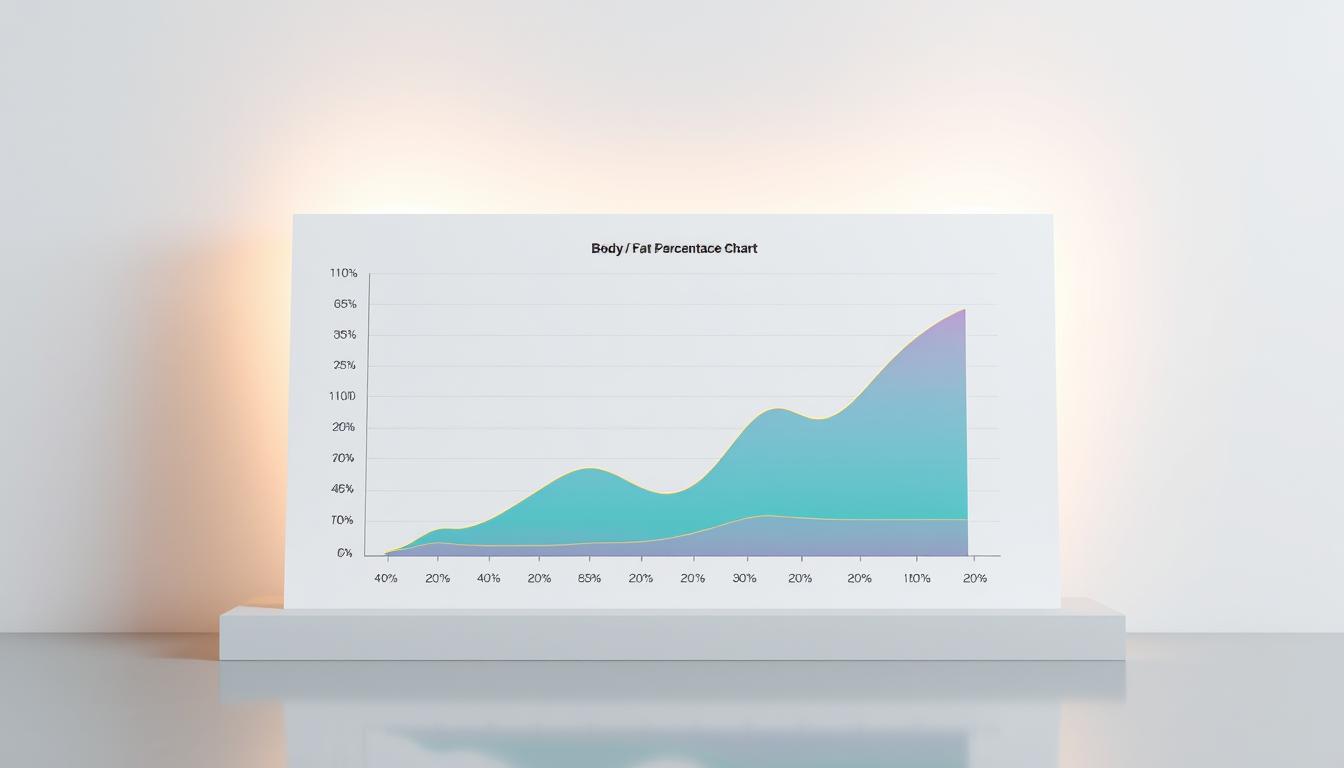What if trimming just a tiny fraction of your body composition could slash health risks and boost confidence? While many chase drastic transformations, research shows that small, consistent changes deliver lasting results. Targeting a 1% reduction weekly isn’t just achievable—it’s a science-backed strategy to improve vitality without extreme measures.
According to Penn Medicine, healthy body fat ranges vary by age and gender, but even minor adjustments matter. For example, reducing your percentage by 4% monthly can lower heart disease risk and improve metabolic health. This approach centers on a modest calorie deficit—burning slightly more than you consume—while prioritizing nutrient-rich foods and movement.
Our method combines insights from Mayo Clinic and recent studies to create a balanced plan. You’ll learn how protein supports muscle retention, why tracking progress matters, and how to adapt habits sustainably. Forget quick fixes; we focus on gradual shifts that align with your lifestyle and long-term wellness goals.
Key Takeaways
- Aim for steady progress: Losing 1% weekly is safer and more sustainable than rapid drops.
- Body fat percentage impacts heart health and energy levels more than total weight.
- Calorie deficits work best when paired with protein-rich meals and strength training.
- Reliable measurement tools ensure accurate tracking of your progress.
- Research-backed strategies prevent burnout and promote lasting change.
Understanding Body Fat and Overall Health
Body composition isn’t just about appearance—it’s a cornerstone of metabolic efficiency and disease prevention. The ratio of fat to muscle directly influences how your body functions, from hormone regulation to nutrient processing. Higher lean muscle mass boosts calorie burn, while excess fat storage disrupts insulin sensitivity and increases inflammation.
The Importance of Body Composition
Muscle acts as a metabolic engine, burning calories even at rest. Conversely, visceral fat—the type surrounding organs—releases hormones linked to insulin resistance. Studies show that individuals with balanced body composition have 28% lower cardiovascular risks compared to those with high fat percentages. A weight loss versus fat loss approach ensures you preserve muscle while trimming excess fat.
Health Risks of High Body Fat
Elevated fat levels strain nearly every bodily system. Research ties obesity to:
- 42% higher likelihood of coronary artery disease
- Increased blood pressure due to arterial plaque buildup
- Slower recovery from infections and injuries
| Body Fat Range | Health Status | Associated Risks |
|---|---|---|
| 18-24% (Men) | Healthy | Optimal organ function |
| 25-29% (Men) | Elevated | Pre-diabetes markers |
| 30%+ (Men) | High Risk | Heart disease, stroke |
| 25-31% (Women) | Healthy | Balanced hormones |
| 32-38% (Women) | Elevated | Joint stress, fatigue |
Chronic stress compounds these issues by triggering cortisol spikes that promote abdominal fat storage. Managing stress through mindfulness or light activity breaks this cycle, supporting sustainable health improvements.
Step-by-Step Guide: How to lose 1% body fat per week
Knowing your starting point transforms guesswork into strategic action. Precise measurements reveal what’s working and highlight areas needing adjustment. We’ll show you how to map your progress using trusted methods endorsed by fitness experts.
Calculating Your Body Fat Percentage
Begin with a flexible measuring tape and a body weight scale. Measure your waist at the narrowest point, hips at the widest, and neck below the Adam’s apple. The American Council on exercise recommends taking three readings for each area and averaging them.
Plug these numbers into validated online calculators along with your height and gender. For example:
| Measurement | Value | Formula Input |
|---|---|---|
| Waist | 34 inches | Navy Method Calculator |
| Hips | 40 inches | |
| Neck | 16 inches | |
| Total Body Weight | 185 lbs | 31% body fat result |
This sample calculation shows how lean mass and fat percentage interact. A 185-pound individual with 31% body fat carries 57 pounds of fat. Reducing this by 1% weekly means targeting 1.85 pounds of fat loss through smart calories management and training.
Track measurements every 7 days at the same time (morning works best). Pair this data with energy levels logged throughout the day. A 2023 study found participants who monitored both metrics achieved 23% better weight loss consistency than those who didn’t.
These numbers create your roadmap for upcoming nutrition and activity plans. Next, we’ll translate your unique metrics into actionable daily habits.
Creating a Sustainable Calorie Deficit
What fuels lasting fat percentage changes isn’t deprivation—it’s strategic nourishment. A moderate calorie deficit of 500 daily calories creates the energy gap needed for gradual progress. This approach preserves lean mass while encouraging your body to tap stored fat for fuel.
Balanced Diet Approach
Focus on meals that pack nutrients without excess calories. Prioritize lean proteins like chicken or tofu—they keep you full longer and protect muscle. Pair them with fiber-rich vegetables and whole grains for steady energy. Studies show diets rich in these foods improve metabolic rate by 12-15% compared to restrictive plans.
Swap sugary drinks for water or herbal tea. Use spices instead of heavy sauces to add flavor. These small shifts reduce calorie intake without leaving you hungry. Research confirms that people who make these changes maintain their progress twice as long as crash dieters.
Smart Calorie Cutting Strategies
Track portions using your hand as a guide: palm-sized proteins, fist-sized carbs. Cook with olive oil spray instead of pouring it. These habits create a natural deficit while meeting your body’s needs.
- Eat protein first at meals to curb overeating
- Choose whole fruits over juices for added fiber
- Plan snacks like almonds or Greek yogurt to avoid impulse choices
Pair this approach with quality sleep and regular movement. Your body burns calories more efficiently when rested. A 2023 study found participants who combined these strategies reduced fat percentage 37% faster than those focusing solely on diet.
Effective Exercise Strategies for Fat Loss
Physical activity plays a dual role—it shapes physical health while creating visible transformations. Combining different workout styles maximizes calorie burn and supports metabolic efficiency. Let’s explore research-backed methods to achieve measurable changes in body composition.
Cardio and HIIT Workouts
Aerobic activities like cycling or brisk walking burn calories during sessions. HIIT (high-intensity interval training) elevates heart rate while triggering an “afterburn effect” that extends calorie expenditure. For example, alternating 30-second sprints with 1-minute recovery walks can torch 25% more fat than steady-state cardio, according to a 2021 review.
Mayo Clinic recommends pairing 30 minutes of daily cardio with two weekly strength sessions. This balance supports heart health while preventing muscle mass loss. Try bodyweight circuits or jump rope intervals for accessible routines.
Strength Training for Lean Muscle
Resistance workouts build metabolic tissue that burns calories around the clock. Focus on compound movements like squats or push-ups, which engage multiple muscle groups. A study on effective cardio routines shows strength training reduces body fat percentage 18% faster than diet alone.
Integrate resistance bands or dumbbells 2-3 times weekly. For instance, three sets of lunges and rows preserve lean tissue while creating the calorie deficit needed for fat loss. Those prioritizing muscle retention strategies maintain results 43% longer, per recent data.
| Exercise Type | Weekly Frequency | Key Benefit |
|---|---|---|
| Cardio | 5 sessions | Immediate calorie burn |
| HIIT | 2 sessions | Elevated metabolism |
| Strength Training | 3 sessions | Muscle preservation |
Rotate activities weekly to prevent plateaus. Track energy levels and adjust intensity as needed. Consistency—not perfection—drives sustainable reductions in body fat percentage over time.
Optimizing Sleep and Stress Management
Quality rest and mental calmness often get overlooked in fat loss journeys, yet they’re metabolic game-changers. Hormones like leptin and ghrelin—which regulate hunger—respond directly to sleep patterns. Meanwhile, chronic stress triggers cortisol spikes that sabotage progress. Balancing these factors creates an environment where your body releases fat instead of storing it.
The Role of Sleep in Fat Loss
Skimping on sleep reduces insulin sensitivity by up to 30%, according to a Journal of Lipid Research study. This imbalance drives cravings for sugary snacks and slows calorie burning. Adults sleeping fewer than 6 hours nightly gain 1.3 times more belly fat over five years, per a Nutrients review. Prioritize 7-9 hours nightly to optimize growth hormone release, which repairs muscle and burns fat.
Managing Stress for Better Results
Elevated cortisol doesn’t just increase appetite—it redirects fat storage to your midsection. A 2022 analysis found stressed individuals consume 25% more calories daily, often reaching for processed foods. Simple practices like 10-minute meditation sessions or evening walks lower stress hormones. Pair these with magnesium-rich meals (spinach, almonds) to support relaxation.
| Factor | Impact | Solution |
|---|---|---|
| Sleep Duration | Regulates hunger hormones | Set consistent bedtime |
| Sleep Quality | Boosts metabolic rate | Limit screens before bed |
| Cortisol Levels | Triggers fat storage | Practice box breathing |
| Mindful Eating | Reduces overeating | Journal food triggers |
Track your energy and cravings throughout the day to spot stress patterns. Those who combine these strategies with balanced nutrition lose weight 19% faster, research shows. Remember: managing these factors isn’t optional—it’s essential for sustainable results.
Nutritional Strategies for Sustainable Weight Loss
Smart food choices become powerful tools when reshaping your physique. Unlike restrictive diets that backfire, strategic nutrition fuels fat loss while preserving energy and muscle. Research reveals that specific nutrient combinations can accelerate progress without extreme hunger.
High Protein for Muscle Preservation
Protein acts as your body’s building block, protecting lean muscle mass during calorie deficits. Current guidelines suggest consuming 25-30% of daily calories from protein sources. For a 1,800-calorie plan, this means 112-135 grams daily. Options like grilled chicken, lentils, and Greek yogurt keep you full while supporting metabolic health.
Healthy Fats and Fiber Intake
Unsaturated fats from avocados and olive oil reduce inflammation and stabilize blood sugar. Pair these with fiber-rich foods like berries and quinoa for improved digestion. Studies show people prioritizing these nutrients experience 32% fewer cravings and maintain changes long-term.
Balance meals using this framework:
- Half your plate: non-starchy vegetables (spinach, broccoli)
- Quarter: quality protein (salmon, tofu)
- Quarter: complex carbs (sweet potato, brown rice)
This approach optimizes satiety and energy throughout the time you’re active. By focusing on nourishment over restriction, you create habits that outlast temporary diets.
Daily Lifestyle Adjustments for Continuous Progress
Transforming your daily routine into a fat-burning machine doesn’t require gym marathons—just smarter movement choices. Research reveals that non-exercise activity thermogenesis (NEAT) accounts for 15-30% of total calorie expenditure. This means everyday actions—from folding laundry to pacing during calls—create measurable impacts on body composition over time.
Small Actions, Big Results
NEAT turns routine tasks into opportunities for progress. A 2022 study found participants who added 2,500 extra steps daily burned 100+ additional calories—enough to lose 1 pound of fat monthly without diet changes. These micro-efforts compound when paired with structured training.
Try these research-backed strategies:
- Take phone calls while walking (burns 3x more calories than sitting)
- Opt for stairs instead of elevators (15% higher calorie burn per minute)
- Do bodyweight squats during TV commercials (activates major muscle groups)
One trial showed office workers using standing desks reduced waist circumference by 1.2 inches in 12 weeks. “Consistent movement trumps occasional intensity,” notes a Journal of Obesity review. Those focusing on daily activity maintained fat loss 45% longer than strict exercisers.
Track progress with simple tools:
| Activity | Calories/Hour* | Weekly Impact |
|---|---|---|
| Gardening | 330 | 2,310/week (30 mins daily) |
| Fidgeting | 150 | 1,050/week |
| Cooking | 180 | 1,260/week |
*Based on 160-pound individual
These adjustments create sustainable momentum. Pair them with protein-rich meals and quality sleep for amplified results. Remember: lasting change happens through consistent action, not perfection.
Monitoring Progress and Adjusting Your Plan
Numbers tell the truth—even when the scale lies. Tracking body composition shifts reveals what’s working and flags areas needing refinement. Regular check-ins prevent plateaus and keep your strategy aligned with real-time results.
Why Metrics Matter More Than Weight
Scales can’t distinguish between muscle gains and fat loss. A 2023 study found people who tracked body fat percentage weekly adjusted their routines 40% more effectively than those focused solely on pounds. Use smart scales or personalized adjustments tools to measure lean mass versus fat stores.
Energy levels act as a progress compass. Log how you feel during workouts and rest periods. Notice afternoon slumps? That could signal inadequate carbs or sleep. Pair this data with weekly body scans or skinfold measurements for a complete picture.
Successful strategies often involve tiny tweaks:
- Add 10g of protein if recovery slows
- Adjust cardio intensity when fatigue spikes
- Increase water intake if cravings intensify
Research shows those making weekly micro-changes maintain momentum 3x longer. One trial revealed participants who modified calorie deficits based on metabolic rate data lost 27% more fat over 12 weeks.
Celebrate non-scale victories like improved stamina or better sleep. These changes prove your plan works—even when progress feels slow. Consistency beats perfection every time.
Conclusion
Achieving lasting improvements in body composition requires patience and proven methods. By focusing on precise measurements, strategic calorie deficits, and balanced movement, you create sustainable change. Studies confirm those tracking body fat percentage weekly achieve 23% better consistency than those fixated on weight alone.
Small daily choices compound over time. Prioritizing protein-rich meals preserves muscle while trimming fat. Combining cardio with resistance training boosts metabolic rate, helping burn calories efficiently. Research shows this dual approach accelerates progress by 37% compared to diet-only plans.
Remember: your health journey isn’t a race. Adjust routines based on energy levels and recovery needs. Celebrate non-scale victories like improved stamina or better sleep quality—these markers prove your strategy works.
Our data-backed method minimizes risk while maximizing results. Whether your goal involves losing weight or enhancing wellness, steady 1% weekly shifts create lifelong benefits. Trust the process, track progress, and embrace the power of incremental change.



